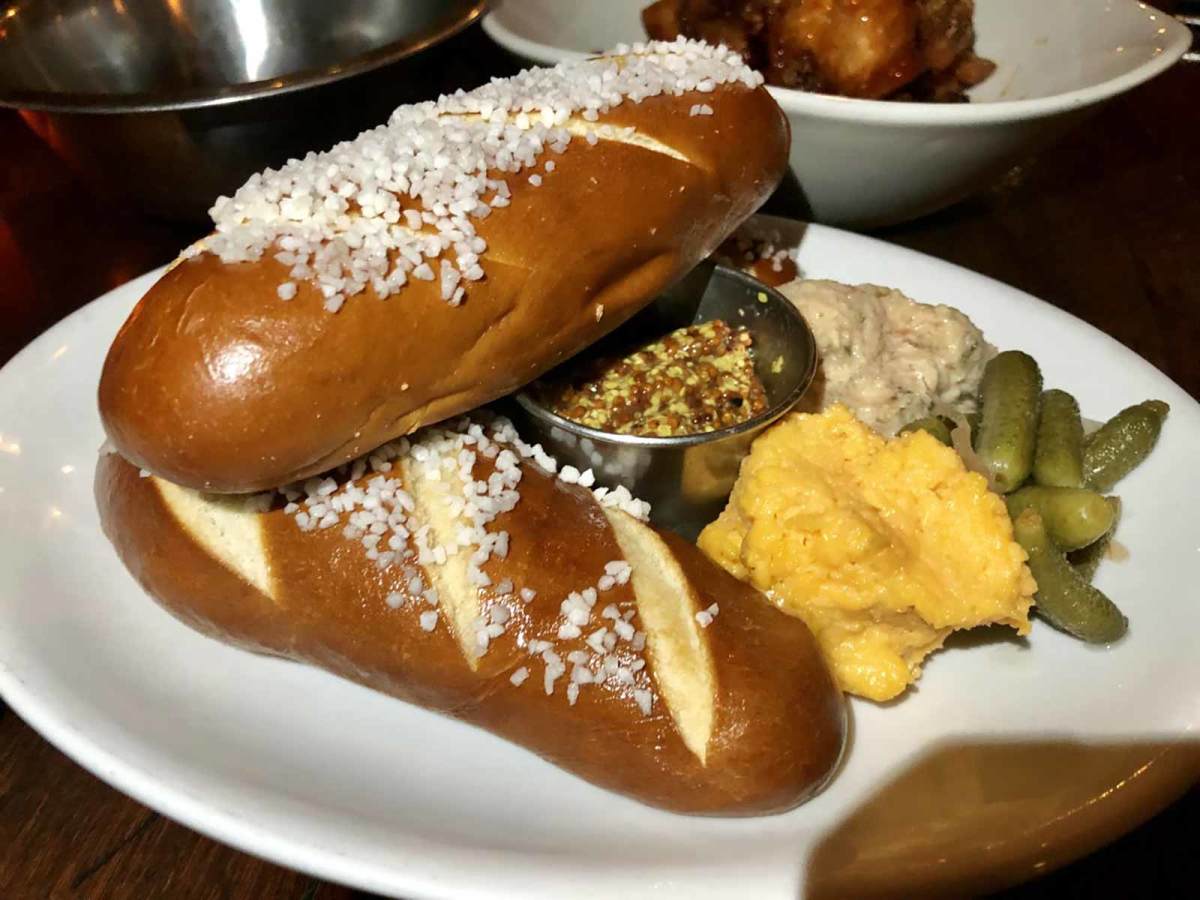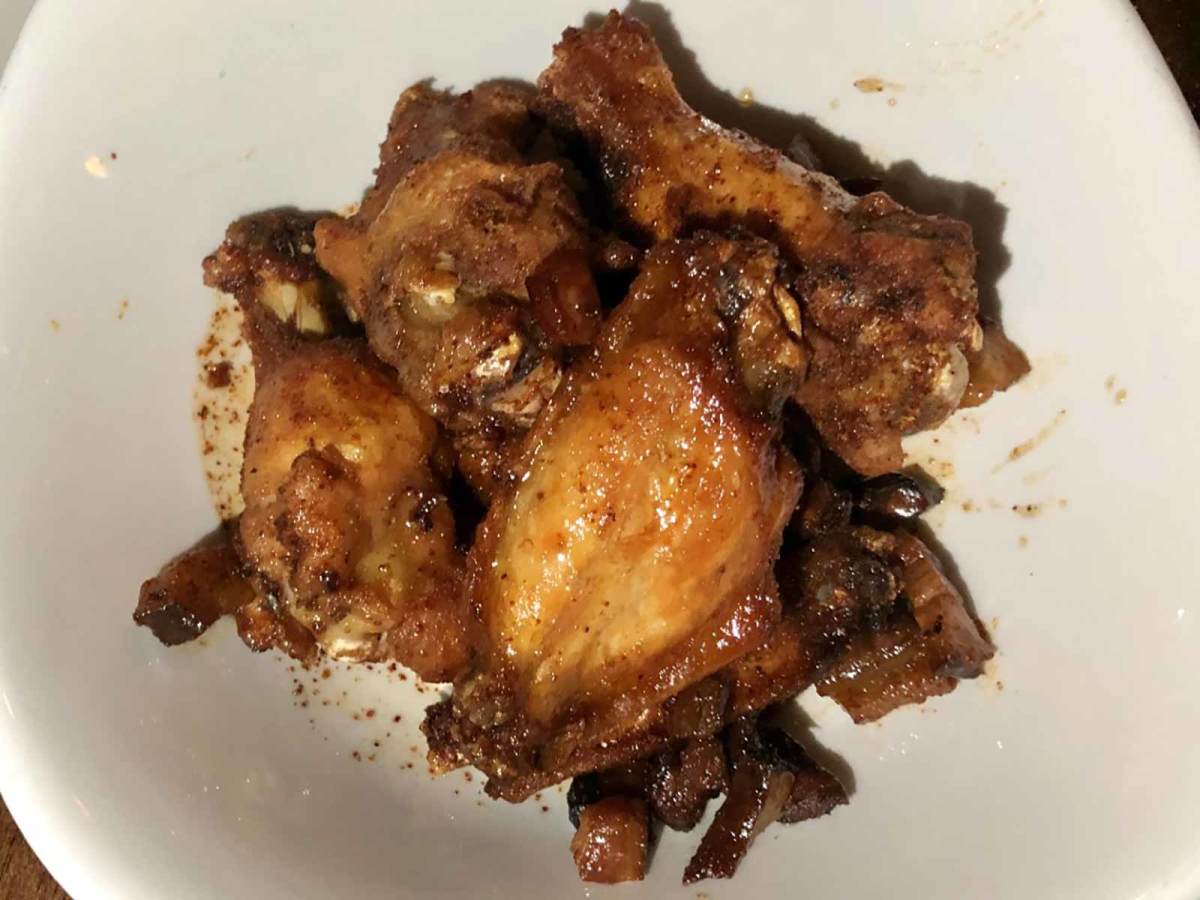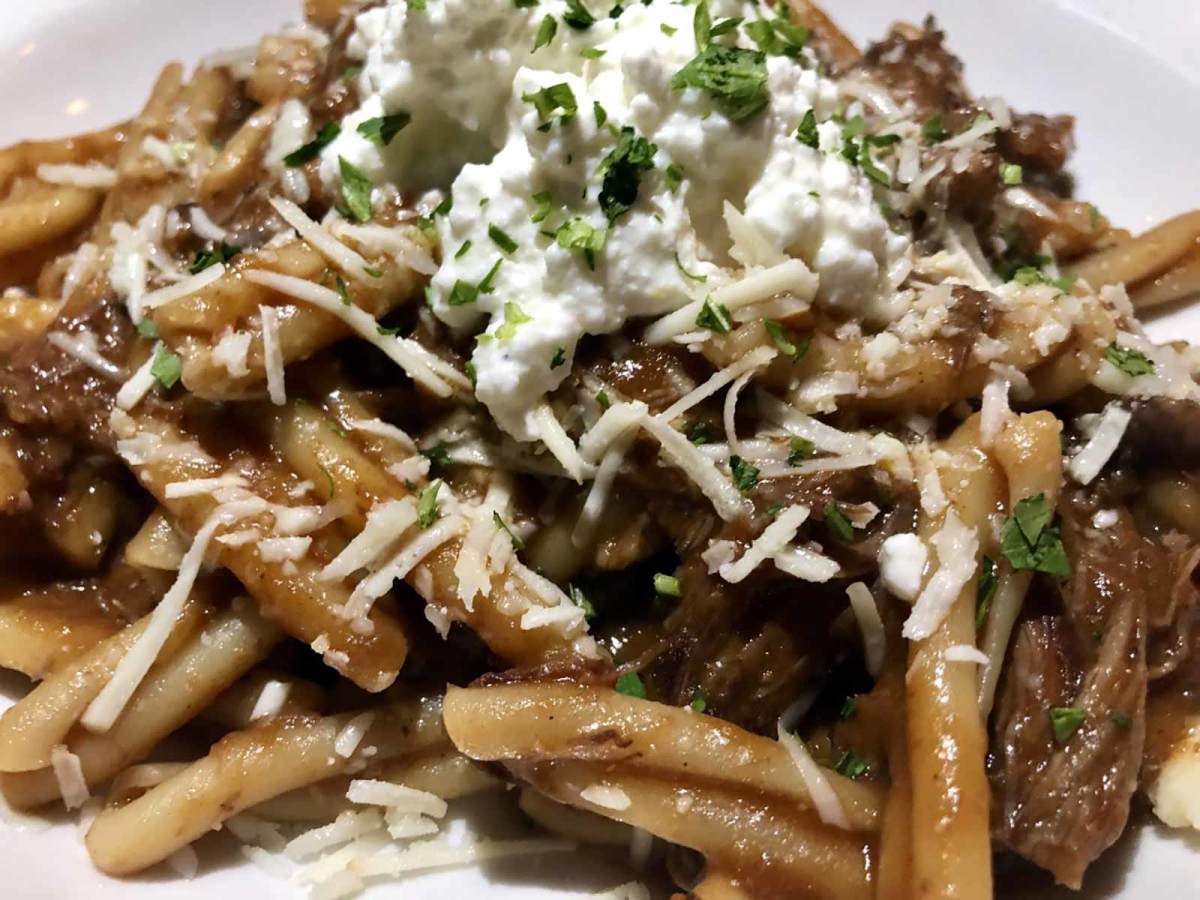How Four Standout College QBs Are Training for an NFL That's Changing to Fit Their Skills

FORT LAUDERDALE, Fla. — Two of the most athletic quarterbacks in this year’s NFL draft are trying to block a shopping cart’s wheels with medicine balls when a cry echoes through the training center.
“OWWWWWWWWWWW,” former Mississippi State star Nick Fitzgerald yells as the non-quarterbacks hitting the weights—including rehabbing former Oklahoma receiver Marquise “Hollywood” Brown—turn to see the source of the commotion, which began when former Penn State star Trace McSorley accidentally dropped a medicine ball on Fitzgerald’s foot. Fitzgerald’s sense of humor returns as quickly as his mobility, though. “Trace is now the fastest quarterback here,” the 6'5", 235-pounder jokes moments later. “That’ll never change,” McSorely cracks back.
Why are McSorley and Fitzgerald maneuvering a shopping cart on a patch of FieldTurf? For the sake of physics. They’re both training with coach Ken Mastrole, a former Maryland and Rhode Island quarterback who bounced around the Arena Football League, the World League and af2 before turning to coaching. He spent a few years running the offense of the af2 team he once quarterbacked before opening his own Florida-based quarterback consultancy about 10 years ago.
Mastrole has the quarterbacks tying tension bands to the cart, which is immobilized thanks to the medicine balls. The quarterbacks will then hold a band in their left hands and a football in their right as they drop back and throw. If a QB’s front side opens too early prior to his throw, the band will tell on him by losing tension. If he doesn’t generate enough torque with his core, the band will tell on him. Earlier in the day in Boca Raton, Mastrole has former Washington State quarterback Gardner Minshew and former Ole Miss quarterback Jordan Ta’amu holding bands that are tied to a wall in their left hands and towels in their right. They go through the motion of a throw, and if they do it correctly, the towel will snap at the point where they would release the ball. If not? “If they’re smacking the bands with the towel, then they’re breaking down,” Mastrole says.
Mastrole didn’t teach this way until a few years ago. He worked on mechanics with his quarterbacks, but those drills were based largely on what Mastrole learned as a player. About three years ago, he met Massachusetts-based coach Gardy O’Flynn through a mutual high school quarterback client. O’Flynn, a former minor league pitcher, works with any athletes whose sports require an overhand rotational delivery. This could be a baseball pitcher, a quarterback, a javelin thrower or a volleyball outside hitter. O’Flynn works through the National Pitching Association, whose founder you probably know. It’s Tom House, the former Major League pitcher who has used physics to help Nolan Ryan with his fastball and Tom Brady with his deep ball.
Mastrole began incorporating those drills into his training of high-schoolers, college quarterbacks and draft prospects. In 2016, five of the QBs he trained (Jacoby Brissett of Florida/NC State, Jake Rudock of Iowa/Michigan, Jeff Driskel of Florida/Louisiana Tech, Brandon Allen of Arkansas and Brandon Doughty of Western Kentucky) got drafted, but he felt the Tom House drills helped him explain the “why” of mechanics better.
During the run-up to that 2016 draft, a family friend of Minshew’s who works as an NFL scout worked a pro day that Mastrole ran and then, coincidentally, sat next to Mastrole on the flight out of town. The friend told Minshew, who had then just finished his first season at East Carolina, that if he hired a coach, it should be Mastrole. Minshew began working with Mastrole before the 2017 season and between the ’17 and ’18 seasons after Minshew had decided to leave East Carolina as a graduate transfer. You probably know what happened next. Minshew transferred to Washington State, where he led the nation in passing yards per game with 367.6 and helped the Cougars to an 11–2 record. Before he arrived in Pullman, Minshew worked with Mastrole on keeping his front side tight so he didn’t lose accuracy upon his release and on keeping his mechanics consistent from throw to throw. “I was kind of all over the place,” Minshew says of his early college years. He believes Mastrole’s practical approach—tying concepts to specific situations on the field—helped him grasp the mechanical tweaks faster. “He just does a good job of breaking down your throwing motion and putting it in terms you can understand,” Minshew says.
Minshew’s rise at Washington State is one of Mastrole’s biggest success stories, but this draft class could produce even more. Four of the five quarterbacks in that 2016 class (Allen, Brissett, Rudock and Driskel) finished the 2018 season on NFL rosters. There’s a decent chance some or all of those could go on to long, lucrative careers, even if only as backups.
But this group was more accomplished than that group was in college, and the way the NFL has changed offensively in the past few years seems to make these quarterbacks more valuable. They all have imperfections that likely will suppress their draft positions, but there is a reason Mastrole—who in 2002 lost a nail-biter race to be the Bears’ third-string QB—peppers chalk talks with tips that won’t help the players in the draft but will help them once they get into an NFL camp. He tells Ta’amu to write the yardage distances on every route when he draws a play. Later, he tells the assembled QBs to pay special attention to the words their head coach and offensive coordinator use for everything—even if a concept has a better-known name—and sprinkle those words into meeting-room and practice-field conversation. “They want you to speak it just like the coach,” Mastrole says. “So listen to how he speaks. You’ve got to talk like he talks.” All four of these QBs will be in a camp, and all four could stick in the league for a long time by making some specific improvements.
At six feet and 200 pounds, McSorley may lack ideal size, but he has every intangible NFL teams want. His command of the offense at Penn State was without question, and he can rattle off the particulars of practically every play the Nittany Lions ran last season. He also can explain exactly what he did wrong when plays went awry. He’ll impress NFL coaches in meetings with his ability to explain why offensive concepts work or don’t work, and he’ll also be able to pick up new schemes quickly.
McSorley must work on arm strength and mechanics to convince NFL coaches he can fit the ball into windows that will get much tighter at the next level. But if he can, his improvisational skills combined with his ability to master an offense could make him a valuable backup for a team like the Browns, Chiefs or Texans. McSorley may not have all the tools Baker Mayfield, Patrick Mahomes or Deshaun Watson possess, but he’s athletic enough to be an acceptable facsimile in a pinch and might be good enough to work his way into a starting job somewhere in a few years.
Minshew, meanwhile, excelled in an Air Raid offense that produced Mahomes and Kliff Kingsbury, who was just hired to coach the Arizona Cardinals. At 6'1" and 224 pounds, he’s sturdily built—especially in his lower body—and in person, he looks faster than he did playing for Washington State. He doesn’t have anywhere near the freakish arm talent of Mahomes, but Minshew does have a near photographic memory that should wow coaches in meetings. Like McSorley, Minshew also needs to prove he has a bigger arm than he showed in college. But for a guy who thought he might spend 2018 as a backup at Alabama and then eventually slide into coaching, Minshew has an awfully strong chance to turn quarterbacking into a longer career than even he may have anticipated.
Ta’amu and Fitzgerald each have a higher ceiling and a lower floor than their counterparts. It’s fun to watch Fitzgerald and McSorley break down one another’s college offenses because both played for Joe Moorhead, who was Penn State’s offensive coordinator before he became Mississippi State’s head coach. Fitzgerald also played for Dan Mullen in Starkville, and Mullen requires his quarterbacks to adjust protections more than most collegiate spread offense coaches do. That helped Dak Prescott go from Mississippi State to starting for the Cowboys, but Fitzgerald needs more polish than Prescott did.
Still, Fitzgerald is the rare quarterback—Kyler Murray is the other in this class—who is athletic enough to play another position in the NFL. (Murray definitely isn’t playing anywhere but quarterback now that he has chosen football over baseball.) Fitzgerald’s size and speed (he’d toast most flex tight ends) combined with a big arm will intrigue NFL coaches. But after posting a shaky completion percentage (51.6) in 2018, Fitzgerald will have to prove he can throw more accurately. That’s why he and Mastrole are working hardest on ensuring Fitzgerald has a consistent throwing motion so he knows where the ball is going when he releases it. Fitzgerald probably could develop a fallback plan that allows him to catch passes in the NFL instead of throwing them, but he’ll exhaust all quarterback avenues first.
Ta’amu, meanwhile, has decent size (6'2", 210) and the best arm of the group. He was productive (9.4 yards an attempt) and accurate (63.6 completion percentage) in 2018, but he did that with a receiving corps that was as good as some NFL teams’. He also did it playing in a relatively simple offense that didn’t ask him to handle the same workload that an NFL quarterback would prior to the snap. Ta’amu must learn how to adjust protections and how to read an entire defense. A team that needs him to play right away would be setting him up to fail, but a team that can take him as a developmental pick and bring him along more slowly could wind up with a gem in a few years. The question for Ta’amu is whether he’ll be able to process everything he needs to process as an NFL quarterback. It’s impossible to know that now because he’s never been asked to do it. But those silky throws will get him on a roster, and then he’ll get a chance to prove himself.
For the next two months, all four QBs will work with Mastrole to try to give themselves the best chance possible by getting drafted as high as possible. None is an ideal prospect, but every one produced at a high level playing in a Power 5 conference. No matter where they get selected in April, every one of them has a chance.
A Random Ranking
Credit SI college football editor Eric Single with our topic this week. He wants to see the best fictional languages ranked. To that I say HIja’!
1. Klingon — Star Trek
2. Parseltongue — Harry Potter
3. High Valyrian — A Song of Ice and Fire
4. Elvish (Sindarin) — The Lord of the Rings
5. Huttese — Star Wars
6. Dothraki — A Song of Ice and Fire
7. Mondoshawan — The Fifth Element
8. The Black Speech — The Lord of the Rings
9. Na’vi — Avatar
10. Dink Dink — Spaceballs
Three And Out
1. The NCAA’s decision to allow quarterback Justin Fields to play in 2019 at Ohio State instead of sitting out a season after transferring from Georgia does not—as many would have you believe—mean we’ve entered a period of complete free agency in college football. Fields had a very unique situation that made the waiver impossible for the NCAA to deny. I explained that situation and told you Fields would be playing in 2019 on the day Fields entered his name in the transfer portal.
Now, if some of the undergraduate transfers with more conventional cases—Ohio State-to-Miami transfer Tate Martell, for example—get granted waivers, then you can start talking about free agency. But let’s wait and see what the NCAA does there. Anyone who was paying attention knew what would happen with Fields.
2. SI’s Ross Dellenger broke down the numbers on one of recruiting’s dirtiest open secrets: Most scholarship offers aren’t actually committable.
3. I visited Manny Diaz at Miami, which feels like a different place than it did six weeks ago.
What’s Eating Andy?
Sometimes, it’s fun to just turn off the old internal governor and see what comes out…
Hey Doug Birdsong, just chill out man. @BarstoolReags pic.twitter.com/iyhBdlToYv
— Kevin Doyle (@KLDoyle11) February 11, 2019
What’s Andy Eating?
Some things that satisfied us through our childhood just don’t hold up. I learned that a few years ago when I tried to introduce my own kids to Chef Boyardee Beefaroni. I devoured so many cans of the stuff as a kid, and I was sure they’d love it as much as I did.
They hated it. “You guys are crazy,” I said. Then I took a bite. It was not the flood of joyous memories I expected. Instead, it tasted like salty, canned tomato sauce. It turns out food—even cheap kid food—today is so much better than it was 30 years ago that our favorites simply can’t compete.
Unless they get classed up.
My recent experience with the house of Boyardee made me a little leery when I noticed Beefaroni on the menu last week at Fort Lauderdale’s The Foxy Brown. But I kept reading. Instead of tiny chunks of ground beef in nuclear-orange sauce, Foxy’s version of Beefaroni featured house-braised short rib ragout. This seemed quite promising, and given the appetizers I’d already sampled, I had faith in the place to create a grown-up version of a dish I adored as a child.

Before we get to the Beefaroni, we have to discuss these appetizers. I ordered the Philly Pretzel Bread because I can’t not order giant soft pretzels when presented the opportunity. And while the bread itself was wonderful, the real draw comes next to it. There’s the usual mustard, but on one side of the mustard is beer cheese spread. On the other side is deviled ham spread. Spreadable beer cheese is great, but spreadable ham is a revelation. Needless to say, neither the pretzel sticks nor the pile of deviled ham spread lasted long. Next came the maple bacon wings, which were perfectly fried wings in a sticky maple sauce with thick chunks of sweet, salty bacon clinging everywhere. Even after the wings were gone, I spent several minutes fishing more bacon out of the bowl.

After that came a grilled Caesar salad. I’m also going to order one of these every time. Some people want a head of iceberg lettuce drowned in bleu cheese. These people are suckers. The correct way to overpay for salad is to order one with romaine hearts that are kissed by the grill and then coated—not drenched—in Caesar dressing. The savory dressing pairs beautifully with the slightly charred lettuce. And at The Foxy Brown, it gets the palate ready for Beefaroni.

The trick must have been finding the correct noodle, because the best thing about the canned stuff back in the day was the way each noodle sucked up exactly the correct amount of sauce. Foxy Brown’s noodles looked like the same thin-gauge ziti that Conagra must still purchase by the ton. The difference, of course, is giant chunks of short rib instead of granules of beef and a sauce that still resembles the tomatoes it came from. My nine-year-old taste buds wouldn’t have appreciated it, but my 40-year-old taste buds were eternally grateful for a blast of memories combined with a new favorite special-occasion comfort food.
